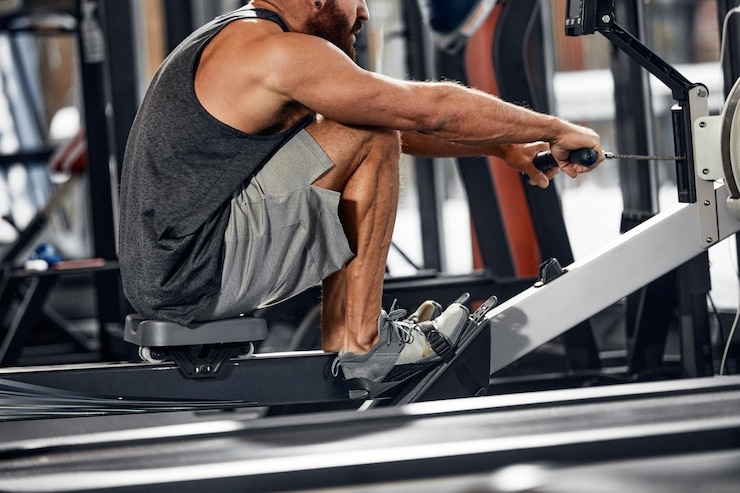Let’s be honest, getting fit at home sounds easier than it actually is. Sure, there’s no commute. No waiting around for machines. No awkward eye contact with strangers. But there’s also laundry staring you down, your phone buzzing nonstop, and that comfy couch calling your name.
Still, more and more people in the UK are ditching gym memberships and turning their living rooms, garages, or sheds into mini fitness zones. And it’s not just about convenience. With the right tools and structure, you can seriously transform your strength routine—right at home.
First Things First: Get Real with Your Goals
If your goal is to build lean muscle, increase endurance, or just stop feeling like a potato—great. But be specific. Want to deadlift your body weight? Do 20 push-ups without dying? Or finally nail a full pull-up? Jot it down. Having clear goals helps you stick to a plan.
And no, you don’t need a massive garage gym filled with expensive equipment. It’s more about being smart with your setup.
Create a Space That Feels Like a Gym (Kind Of)
You don’t need to turn your entire living room into a full-blown workout zone. A small corner works. Got some floor space near the TV? That’ll do. Bonus points if it’s away from distractions.
Add a non-slip mat, a small mirror, and proper lighting. Make it a space that says, "Hey, it’s workout time." That little mental shift can do wonders for consistency.
Equipment That Actually Matters

Now we’re getting into the meat of it. The biggest trap? Buying too much stuff. Don't waste your money. You don’t need five different sets of dumbbells. What you do need is gear that adapts with you.
One solid piece of kit worth the hype? An adjustable gym bench. This little powerhouse gives you tons of flexibility. You can use it for incline presses, step-ups, dips, or even seated curls. It saves space while giving you a wide variety of strength training options. Just one smart investment can really up your home workout game.
You can also throw in some resistance bands, a kettlebell, and a pull-up bar. All compact, all super effective.
Mix It Up: Variety Is the Secret Weapon
Strength training gets boring if you do the same thing every day. And when you’re bored? You quit.
Alternate between upper and lower body days. Mix in functional movements. Do a circuit every now and then. Use free weights one day and bodyweight the next. Keep your muscles guessing.
Also, don’t sleep on mobility work. Add in a few dynamic stretches or yoga flows at the end of your sessions. Recovery counts too.
Make Your Plan Foolproof (and Lazy-Proof)
Consistency beats intensity, always. A simple weekly schedule can help:
Monday: Upper body + core
Tuesday: Active recovery or a short walk
Wednesday: Lower body
Thursday: Rest (but stretch a little)
Friday: Full body blast
Saturday: Cardio or fun movement (bike ride, dance, etc.)
Sunday: Chill + plan next week
This kind of structure stops you from doing too much too soon. And helps you build real progress over time.
How to Stay Motivated When the Couch Looks Too Good
Motivation is a tricky thing. It shows up, then vanishes. So don’t rely on it.
Instead, build habits. Keep your gear in sight. Set a timer. Play a fire playlist. Follow a UK-based trainer on social media. Something as simple as seeing your weights by the door can be a solid nudge.
Also, track your progress. Not just weight, but reps, sets, and how you feel. It’s super satisfying to look back and realize you’ve gone from struggling with 3kg curls to slamming 8s.
Rowing Machine? Yep, That Counts Too

Okay, this isn’t strictly about strength. But hear me out.
A rowing machine is a low-impact, full-body cardio king. It fires up your legs, back, arms, and core in one go. Great for warm-ups, killer for finishers.
Drop in 10–15 minutes at the end of your strength sessions a few times a week. It’ll boost your stamina and help flush out lactic acid. Not a bad way to balance things out.
Don’t Forget the Food Part
You can train like a beast, but if you’re living off crisps and takeaway, your results will stall. Big time.
Fuel your body with whole foods. Protein’s your buddy. So are carbs—yes, even the starchy ones. Don’t cut everything out. Just eat with intention.
You don’t need to be a nutritionist, but knowing the basics helps. And there are plenty of UK-based meal-prep services if you’re not into cooking.
Know When to Push and When to Chill
Progress doesn’t mean maxing out every session. Listen to your body. If you feel wiped, rest. If you feel fired up, go for that extra set.
Sometimes, the best gains come from just showing up, even when you're not at 100%. It’s the showing up that counts.
Connect with Others, Even From Home
You’re not on an island. The UK has a strong home fitness community online. Find a group, follow a challenge, or share your progress.
You’ll feel less alone. And a little healthy competition never hurts.
Final Thoughts: Keep It Real, Keep It Moving
Leveling up your strength routine at home isn’t about perfection. It’s about progress, consistency, and making it fit your life.
Start simple. Pick tools that give you options. Plan your week. Keep it fresh. And don’t be afraid to rest.
Before you know it, that makeshift home gym will start feeling like your power zone. And you? You’ll be lifting stronger, feeling better, and wondering why you didn’t start sooner.
Stick with it. You’ve got this.
